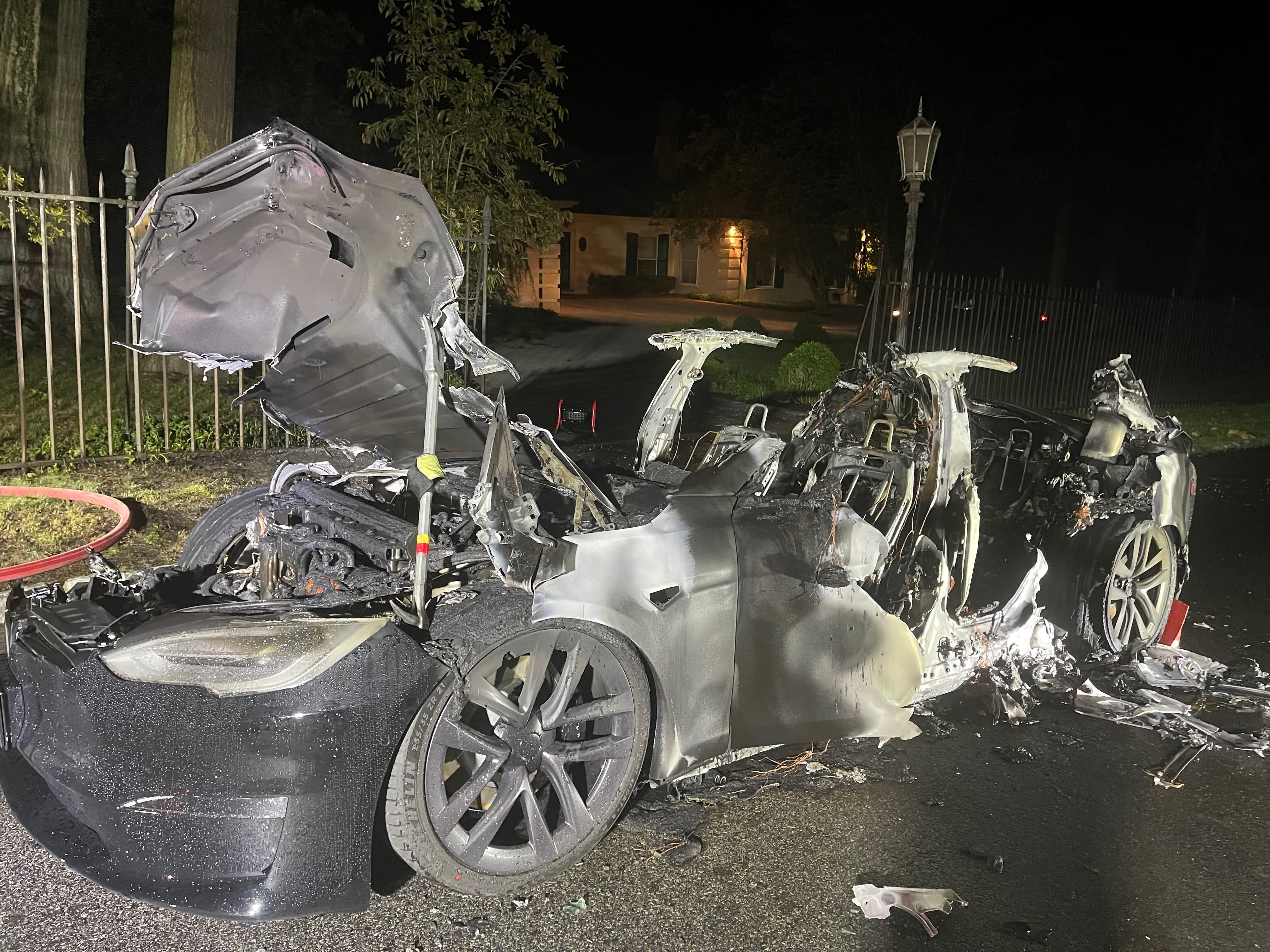Products You May Like
Electric vehicles provide a path to better air quality, reduced fuel costs and comprise a growing new category for automakers. But with the transition to electric transportation comes a new challenge: Vehicles with lithium ion batteries can be especially dangerous when they catch fire.
The good news is battery electric vehicle fires don’t happen often.
Project Director of EV FireSafe in Melbourne, Australia, Emma Sutcliffe, says researchers need more data to determine fire rates conclusively, but preliminary studies indicate fires in fully electric cars are rare.
Research by another firm, AutoinsuranceEZ, says battery electric vehicles have just a .03% chance of igniting, compared to internal combustion engine vehicle’s 1.5% chance. Hybrid electrics, which have both a high voltage battery and an internal combustion engine, have a 3.4% likelihood of vehicle fires according to their study.
However, when fires do occur, electric vehicles with lithium ion batteries burn hotter, faster and require far more water to reach final extinguishment, Sutcliffe says. And the batteries can re-ignite hours or even days after the fire is initially controlled, leaving salvage yards, repair shops and others at risk.
Chas McGarvey, the Chief Fire Officer of Pennsylvania’s Lower Merion Fire Department, told CNBC that one Tesla Model S Plaid fire his department handled in 2021 burned so hot that it melted the roadway beneath it.
Sutcliffe told CNBC, “A lot of the time fire fighters and fire agencies are just expected to kind of figure it out.” With so many new models hitting the road, McGarvey the fire chief in Pennsylvania said, “We’re still trying to catch up with all this stuff. But it changes almost every day!”
The Director of Maryland’s Energy Institute, Eric Wachsman, says that the qualities that make lithium ion battery cells powerful enough to move a passenger vehicle can also make them vulnerable to igniting– especially if battery cells within them are damaged or defective.
Lithium ion battery cells have electrodes placed close together, which increases the chances of a short, he says, and they are filled with a flammable liquid electrolyte.
“This flammable liquid could get into what’s called a thermal runaway situation where it just starts sort of boiling, and that results in a fire,” he said.
Electric vehicles include battery management systems to maintain the right operating temperature for high voltage batteries inside, and those systems control how fast batteries charge and discharge. Improvements to them as well as the battery cells themselves promise to make EVs safer.
Tesla recently announced it’s switching from lithium ion battery cells to lithium iron phosphate (LFP) batteries. Other major automakers including Ford, and VW are also substituting LFPs for nickel or cobalt formulations used in some of their electric vehicles.
“These are generally believed to be a lot safer,” said Paul Christensen, a professor of electrochemistry at Newcastle University whose research focuses on lithium ion battery fires and safety.
In the end, he believes, fully electric vehicles have a chance to be safer than the gasoline- or diesel-burning models they replace.
“We’ve had a long time to fully understand the risks and hazards associated with petrol and diesel cars. We’re going to have to learn faster how to deal with the challenges with electric vehicles. But we will.”
